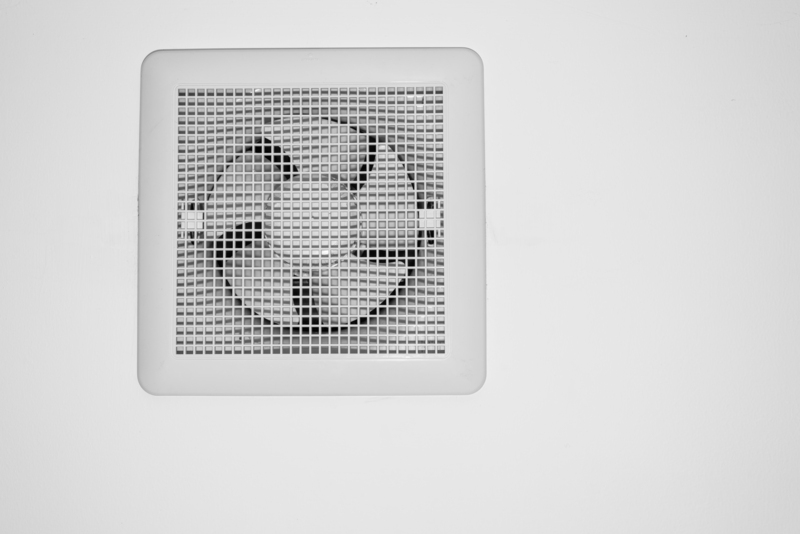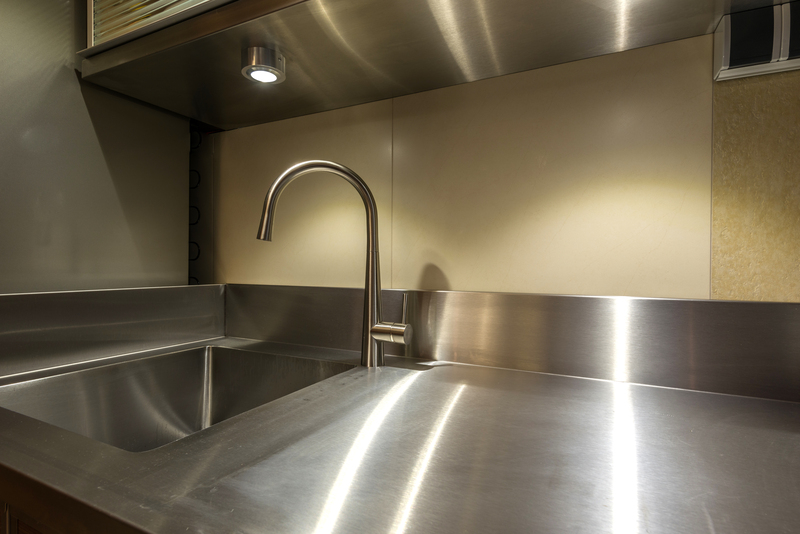Mastering the Art of Cleaning Burnt Residue from Stovetops
Posted on 03/06/2025
Mastering the Art of Cleaning Burnt Residue from Stovetops: A Comprehensive Guide
Are you struggling with tough, burnt residue on your stovetop? If you frequently cook at home, chances are you've already faced the stubborn challenge of cleaning burnt food from your stove. Whether it's a glass stovetop, gas cooktop, or an electric range, keeping your appliance spotless is key to a safe, hygienic, and beautiful kitchen. In this detailed guide, we'll walk you through mastering the art of cleaning burnt residue from stovetops using tried-and-true methods, natural solutions, professional tips, and preventative measures that make future clean-ups easy.

Why Cleaning Stovetop Burnt Residue Matters
A clean stovetop is more than just about appearances. Burnt residue and food spills can not only cause unpleasant odors but also harbor bacteria, attract pests, and impact the efficiency of your appliance. Moreover, burnt-on grease and charred food particles may eventually affect your stove's heating elements and components. By routinely cleaning burnt residue from your stove, you ensure optimal performance, safety, and extend the lifespan of your cooking equipment.
The Different Types of Stovetops and Their Cleaning Challenges
Before you start cleaning, it's important to know your stovetop type, because each presents unique challenges:
- Gas Stoves: Feature grates and burners that can trap food and grease. Some parts may be removable, but cleaning intricate burners requires care.
- Glass or Ceramic Cooktops: Sleek and modern, but prone to scratching if the wrong tools or chemicals are used. Burnt-on stains are highly visible.
- Electric Coil Stoves: The coils can accumulate burnt food, and while drip pans are removable, they often collect stubborn residue.
Understanding your stove's surface will help you select the ideal method for cleaning burnt residue efficiently and safely.
Essential Supplies for Cleaning Burnt Residue
Having the right supplies makes mastering stovetop cleaning much easier. Here's what you'll need:
- Mild Dish Soap
- Baking Soda (the ultimate natural abrasive cleaner)
- White Vinegar
- Non-abrasive Scrubber or Sponge
- Razor Blade Scraper (for glass stovetops only, and with care)
- Microfiber Cloths
- Clean, Warm Water
- Plastic Putty Knife (for gentle scraping)
- Rubber Gloves (to protect your hands)
For really tough jobs, some may prefer a commercial stovetop cleaner suitable for their appliance.
Step-by-Step Guide: How to Clean Burnt Residue from Your Stovetop
Step 1: Allow the Stove to Cool
Never attempt to clean a hot stovetop. Allow the surface and all removable parts to cool entirely before touching or applying any cleaning solution.
Step 2: Remove Loose Debris and Parts
Take off removable grates, burners, knobs, and drip pans. Brush away any loose crumbs or bits of burnt food with a soft-bristled brush or cloth.
Step 3: Soak Removable Parts
Fill your sink with warm, soapy water. Soak grates, burner caps, and drip pans for 15-30 minutes to loosen stubborn residue. For caked-on grime, add a half cup of vinegar to the soak.
Step 4: Apply Baking Soda Paste
Mix three parts baking soda with one part water to create a thick paste. Spread it onto the burnt residue on your stovetop and let it sit for 10-20 minutes. Baking soda is effective for breaking down burnt-on stains without scratching.
Step 5: Short Soak with Vinegar (Optional)
For exceptionally stubborn burnt spots, spray or dab white vinegar onto the baking soda paste. The fizzing reaction will help loosen tough debris. Wait five more minutes before scrubbing.
Step 6: Scrub Gently but Thoroughly
Using a non-abrasive sponge or microfiber cloth, wipe and scrub the softened burnt residue in a circular motion. Avoid steel wool or harsh scrubbers that may scratch surfaces, especially glass or ceramic tops.
Step 7: Scrape Away Residue (If Needed)
If any burnt-on residue remains, use a plastic scraper or, for glass stovetops, a razor blade held at a 45-degree angle (use caution to avoid scratching). Never use sharp tools on non-glass surfaces.
Step 8: Rinse and Wipe Clean
Remove all cleaning agents by rinsing with clean, warm water and a fresh cloth. Dry the stovetop completely with a microfiber towel to avoid streaks or water spots.
Step 9: Clean and Replace Removable Parts
Scrub, rinse, and thoroughly dry your grates, burners, and drip pans before putting them back. Make sure all parts are moisture-free to prevent rusting or malfunction.
Special Considerations for Different Stovetop Types
Glass or Ceramic Stovetops
- Never use abrasive cleaners or harsh steel wool.
- Razor blades must be new and clean to prevent scratching.
- Use a specialty glass stovetop cleaner for a streak-free shine.
- Buff afterward with a soft, dry cloth.
Gas Stovetops
- Ensure burner holes are free of food particles.
- Check that grates and burner caps are completely dry before reassembling.
- If burners are clogged, use a pin or needle to clear them gently.
Electric Ranges
- Unplug the stove before cleaning coils.
- Remove drip pans for easy soaking and scrubbing.
- Wipe coils with a damp cloth--never submerge electricity-connected parts.
Natural and Homemade Stovetop Cleaners
If you prefer a green approach, several natural ingredients excel at removing burnt residue from stovetops:
- Baking Soda & Water: A classic, non-toxic abrasive ideal for most stovetop surfaces.
- Vinegar & Lemon Juice: Both act as natural degreasers and disinfectants; combine with baking soda for tough spots.
- Salt: Coarse salt can provide extra scrubbing power for sticky, burnt areas without chemical smells.
*Tip: For a pleasant scent, add a few drops of essential oils like lemon or tea tree to your homemade stovetop cleaner.
Tips and Tricks to Prevent Burnt Residue on Stovetops
The best way to avoid marathon scrubbing sessions is to prevent burnt residue before it forms. Here are practical ways to keep your stovetop sparkling:
- Wipe Up Spills Promptly: The sooner you clean up splatters, the less likely they'll burn onto the surface.
- Use Splatter Guards: These handy covers reduce the risk of oil and sauce splashes.
- Cook on Lower Heat: High heat often causes food to boil over and burn onto stovetops.
- Line Drip Pans: Use foil or reusable liners to catch spills on electric ranges, but check your appliance instructions first.
- Regularly check and clean under burner grates to catch hidden residue.
- Adopt a Weekly Cleaning Routine to prevent buildup. Consistency is key to mastering stovetop maintenance!
Common Mistakes to Avoid When Cleaning Burnt Residue
Even seasoned home cooks sometimes make stovetop cleaning mistakes. Protect your investment by steering clear of the following pitfalls:
- Using too much water near electric burners, risking short circuits.
- Scraping with metal tools that can scratch and damage surfaces.
- Neglecting to dry parts thoroughly before reassembly, leading to rust or malfunction.
- Mixing cleaning chemicals that might create hazardous fumes (e.g., bleach with ammonia).
- Ignoring manufacturer's instructions -- always check your appliance's manual for specific cleaning advice.
Professional Tips for Impossible Burnt-On Residue
If you've tried everything and still can't budge the burnt residue, consider these expert strategies:
- Steam Cleaning: Place a damp towel or cloth on the stain and heat the burner briefly (with close supervision and on suitable stovetops only), then wipe away softened residue.
- Specialty Cleaners: Products like Bar Keepers Friend or Cerama Bryte are formulated for glass and ceramic cooktops, safely lifting the toughest scorched marks.
- Overnight Soak: Lay a towel soaked in hot, soapy water or a mix of water and vinegar over the affected area overnight to loosen residue for easier cleaning in the morning.
- Call a professional appliance cleaner if residue persists or for delicate, high-end stovetops.

FAQs About Cleaning Burnt Residue from Stovetops
Can I use oven cleaner on my stovetop?
Oven cleaners are generally too harsh for most stovetops, especially glass and ceramic types. Always use cleaners specifically designed for your stovetop surface to avoid damage.
What's the safest way to remove burnt sugar from a glass cooktop?
Allow the surface to cool, then use a baking soda paste and gently scrape with a razor blade held at a low angle. Avoid abrasive pads to preserve the smooth finish.
How often should I clean my stovetop?
For best results, wipe down daily after use and deep-clean at least once a week or after spills and boil-overs.
How can I keep my stovetop looking new?
Avoid abrasive cleaning pads, always dry thoroughly, and use the correct cleaner for your stovetop's material. A weekly polish (with a microfiber cloth) maintains the shine, especially on glass or ceramic ranges.
Conclusion: Achieving a Spotless, Burn-Free Stovetop
Mastering the art of cleaning burnt residue from your stovetop is a valuable skill for every home chef. With the right approach, tools, and regular maintenance, you can keep your stove looking pristine and functioning efficiently. Remember to identify your stovetop type, use suitable cleansers, and address burnt stains promptly. By implementing the techniques from this guide, you'll spend less time scrubbing and more time enjoying delicious meals in a sparkling kitchen. Start applying these expert stovetop cleaning strategies today for a cleaner, healthier home!
- Key Takeaway: Consistent care, timely cleaning, and the right products are the secret to hassle-free stovetop maintenance!








